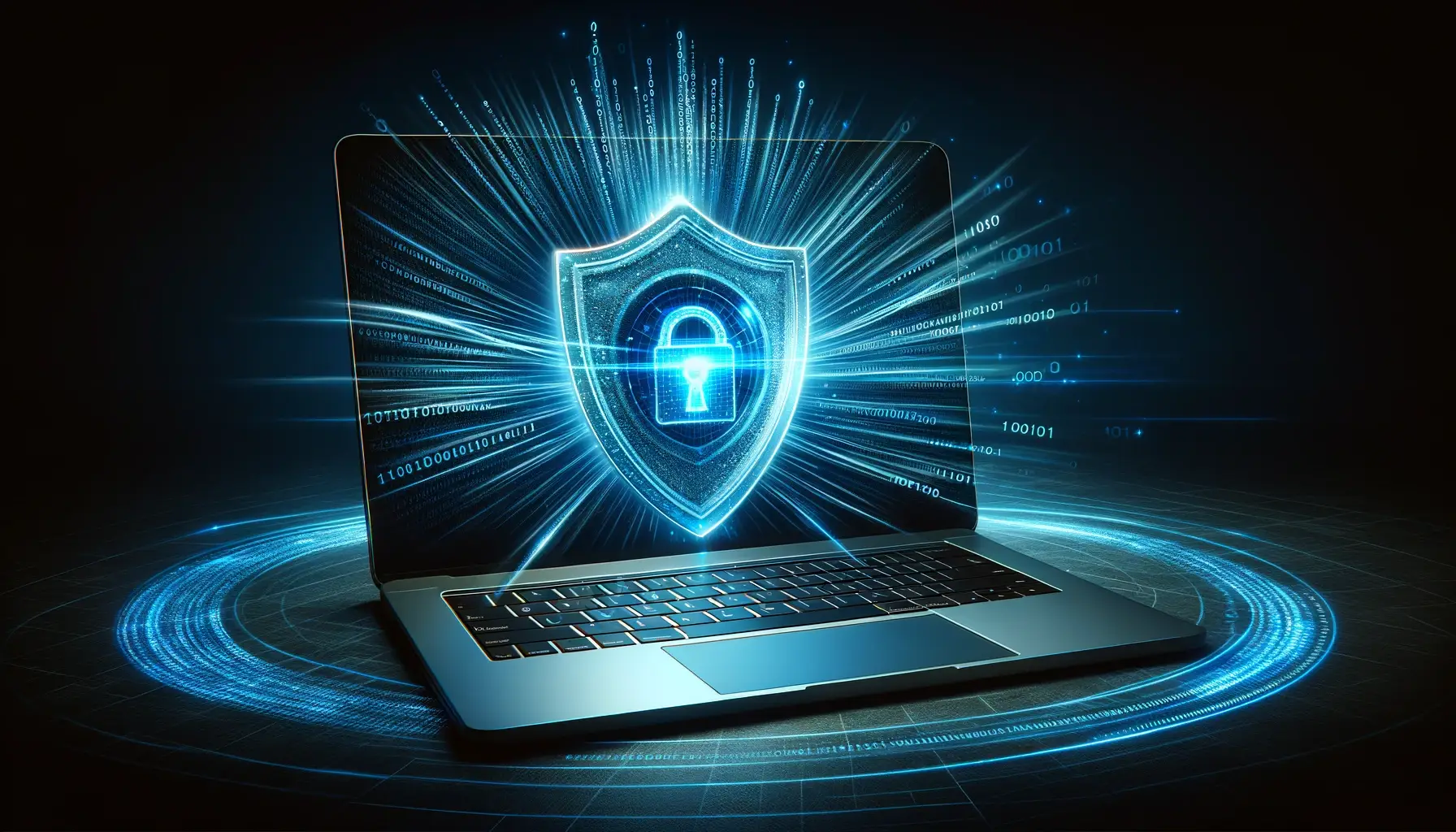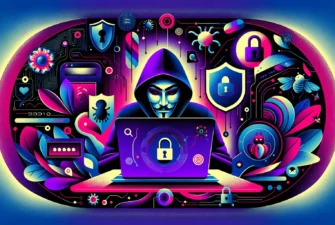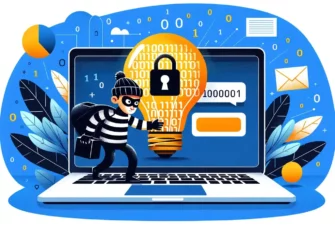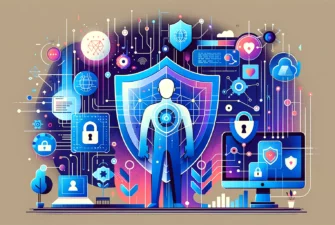
Cybersecurity awareness is crucial in our increasingly interconnected world, where technology shapes our daily lives. The digital landscape is fraught with threats, from sophisticated hacking attempts to deceptive social engineering, endangering individuals, businesses, and nations. To navigate this digital frontier safely, it is imperative that we collectively strengthen our understanding of cybersecurity risks and adopt proactive measures to mitigate them.
This article discusses the importance of cybersecurity awareness and its core aspects, helping you better understand online threats and the average users’ role in combating them.
Table of Contents
- What Is Cybersecurity Awareness?
- Why Is Cybersecurity Awareness Important?
- The Core Aspects of Cybersecurity Awareness
- Major Cybersecurity Incidents
- October Cybersecurity Awareness Month
What Is Cybersecurity Awareness?
Cybersecurity awareness indicates the level of perception and understanding end users have about cybersecurity best practices and the cyber threats that their networks or organizations face day-to-day. Recognizing the dangers of browsing the web, checking email, and interacting online are all elements of cybersecurity awareness.
Of course, IT departments have a much deeper understanding of cybersecurity than marketing managers for example. Still, all employees should be on the same page regarding security hygiene and the ability to spot a threat before it’s too late. An employee opening a phishing email attachment caused the ransomware attack on HSE, Ireland’s national health service, which resulted in a €100 million loss.
As you can see, even letting your guard down for what seemed a benign email led to disaster. For this reason, getting proper cybersecurity training at least once a year is a must.
Why Is Cybersecurity Awareness Important?
The stats don’t lie. 85% of data breaches are due to the “human element”. To make things worse, 43% of employees are “very” or “pretty” sure they have made a mistake with security consequences. To mitigate the risks of cyber attacks, you need regular training. Covering the basics won’t cut it anymore in an increasingly digital world, where cyber thieves find new ways to bypass seemingly unhackable technologies.
Cybersecurity encompasses many different types of threats, attacks, and preventive measures. You should approach it holistically and be proactive. The more you focus on cybersecurity, the stronger it grows within your company’s departments.
When cyber awareness reaches its threshold, it becomes a security culture, an environment where employees willingly embrace and employ cybersecurity practices in their professional and personal lives. In the cybersecurity culture, the awareness transcends the individual and becomes collective. As a result, most security threats are dealt with before they pose a tangible threat, and potential breaches are swiftly reported.
The Core Aspects of Cybersecurity Awareness
Cybersecurity practices range from personnel training and awareness to proven safety countermeasures. Regardless of a company’s niche and specific needs, there are universal means to fight off most cyber attacks.
1. Password Hygiene
Password hygiene refers to the degree to which passwords are selected and managed according to security best practices. Weak passwords have been plaguing the Internet since its inception. And no matter how many measures and advanced technologies exist today to secure data, passwords remain the first line of defense and the most vulnerable component at the same time. When 57% of employees still save passwords on sticky notes, you know there’s plenty of room for improvement.
Never underestimate the potentially devastating effects of a stolen password. Attackers can sell sensitive account details on the dark web to other malicious groups who in turn will scam others by pretending to be you. Here are a few practices to keep your passwords safe:
- Make them long (at least 12 characters). The longer the password the more secure it is. Even a few additional characters create millions of new combinations for automated bots to crack.
- Use password manager software to generate and store your passwords. This method is secure and will help employees better remember their passwords.
- Use a unique password for each account. In the event of a data breach in one of the services you use, your other accounts are not at risk.
2. Ransomware
Ransomware is malware (malicious software) that denies a user or organization access to files on their computer. Attackers encrypt these files and demand a ransom payment for the decryption key, placing companies in a position where paying the ransom is the cheapest way to recover their files.
Ransomware is often spread through phishing emails or via drive-by downloading. Drive-by downloading happens when users unknowingly visit an infected website, and malware is downloaded and installed without their knowledge.
One of the most profitable ransomware of all time was CryptoLocker. Between September and December 2013, it infected over 250,000 systems and earned its creators over $3 million.
To avoid ransomware attacks, follow the web security’s best practices:
- Don’t visit suspicious websites that could have links to malware in them.
- Do not download software from unverified sources. Ensure the software has a Code Signing certificate that authenticates the owner and code integrity.
- Update your security protocols and isolate your recovery systems.
3. Phishing
Phishing is one of the oldest yet most effective cyber-attacks that affect millions of users worldwide. It’s a common scam that lures users into giving up sensitive information like usernames, passwords, or credit card details by masquerading as someone they know and trust.
Phishing is usually conducted via email and is successful because it doesn’t depend on security software to detect and prevent it but uses human psychology to persuade users into following the deceptive request.
Phishing can hit hard even reputable companies such as Sony. In November 2014, the criminal hacking group ‘Guardians of Peace’ leaked a reported 100 terabytes of data from the film studio Sony Pictures by sending emails that appeared to be from Apple.
The best defense against phishing is cyber security awareness. Here’s what you should pay attention to:
- Emails with suspicious spelling, grammar mistakes, and a sense of urgency.
- The address of the sender. It will look almost identical to the original but with an easy-to-detect alternation if you’re attentive. For example, you may think you’re getting an email from [email protected], where in fact it’s [email protected].
- Run regular phishing drills to raise awareness of your employees and educate them on the dangers of this type of cyber attack.
4. Social Engineering
Social Engineering is the underlying process behind a multitude of cyber attacks, including phishing. It relies heavily on human interaction and uses manipulative techniques to trick people into breaching security procedures and best practices.
In a typical social engineering attack, the scammer might pretend to be your boss, neighbor, someone from your IT department, or a reliable business partner you’ve known for years. The impersonator could send you an email or a social media message and ask you to wire a transfer or hand sensitive information.
A classic example of social engineering is the recent attempt to steal Office 365 credentials in which phishers imitated the US Department of Labor (DoL). The attackers spoofed the DoL’s actual email address and bought look-a-like domains where they invited recipients to bid on a government project.
The scam contained professionally written emails and PDFs with supposed bidding instructions and a dedicated portal where unsuspected employees would have to log in and thus give their login details to attackers.
The best antidote to social engineering attacks is awareness. Here’s what you should do to prevent similar incidents:
- Train your employees about the dangers and intricacies of social engineering attacks, and rung phishing simulations to monitor their progress and develop good security habits.
- Limit the information employees may post on social media platforms. Scammers use SM to collect intelligence about their potential victims.
- Keep software and firmware regularly updated. Secure your devices with third-party tools for around-the-clock monitoring, and set your spam filters to high.
5. Payment Security
Most cybercriminals seek quick financial gains, and what better way to earn money than by attacking the payment gateways directly? By getting access to confidential information such as bank account numbers, credit card details, and physical addresses, the attackers can easily steal money from the source.
If your business collects money from customers via an online payment gateway, you should protect their sensitive data and transaction details from cyber thieves.
Major Cybersecurity Incidents
In 2021, the Chinese hacking group Hafnium found vulnerabilities in Microsoft Exchange that gave them access to the email accounts of at least 30,000 organizations in the U.S. and 250,000 globally.
A year before, SolarWinds, a major US information technology firm, was the victim of a massive cyberattack that went undetected for months. Hackers, allegedly backed by the Russian government, deployed malicious code into its Orion IT monitoring and management software used by thousands of enterprises and government agencies worldwide, including multiple parts of the United States federal government.
In Q1 2022, the likes of Nvidia, T-mobile, and Samsung fell victim to multiple attacks via leaked credentials and insider threats. The examples could go on, but the picture is clear: No one is immune to cybercrimes, even the big companies that spend millions on web security. That’s why cybersecurity awareness is important.
October Cybersecurity Awareness Month
October is recognized as Cybersecurity Awareness Month (CSAM) worldwide. It’s an annual campaign dedicated to raising awareness about the importance of cybersecurity, promoting good cybersecurity practices, and ensuring a safe and secure digital environment for individuals, businesses, and governments.
It was first observed in the United States in 2004 as a collaborative effort between the National Cyber Security Alliance (NCSA) and the U.S. Department of Homeland Security (DHS). The aim was to address the growing concerns and challenges posed by cyber threats and to educate the public on how to stay safe online.
Throughout October, various activities and initiatives are organized to promote cybersecurity awareness. These include public awareness campaigns, training and workshops, cyber hygiene assessments, information sharing, and partnerships and collaborations.
Over time, the campaign gained international recognition, and today, many countries and organizations around the globe participate in the October Cybersecurity Awareness Month.
Final Words
Cybersecurity awareness is a topic that deserves a lot more attention than it gets, especially in small to medium-sized companies where budgets are tighter and employees, due to lack of proper training, are more susceptible to different types of cyberattacks.
Viruses and trojans from downloads, spam emails, and data breaches from phishing scams put your business and customers at risk. For this reason, it’s imperative to educate employees and develop an effective cybersecurity strategy. Building cyber awareness is a continuous process that adapts to the latest digital developments and security trends.
Save 10% on SSL Certificates when ordering today!
Fast issuance, strong encryption, 99.99% browser trust, dedicated support, and 25-day money-back guarantee. Coupon code: SAVE10



























